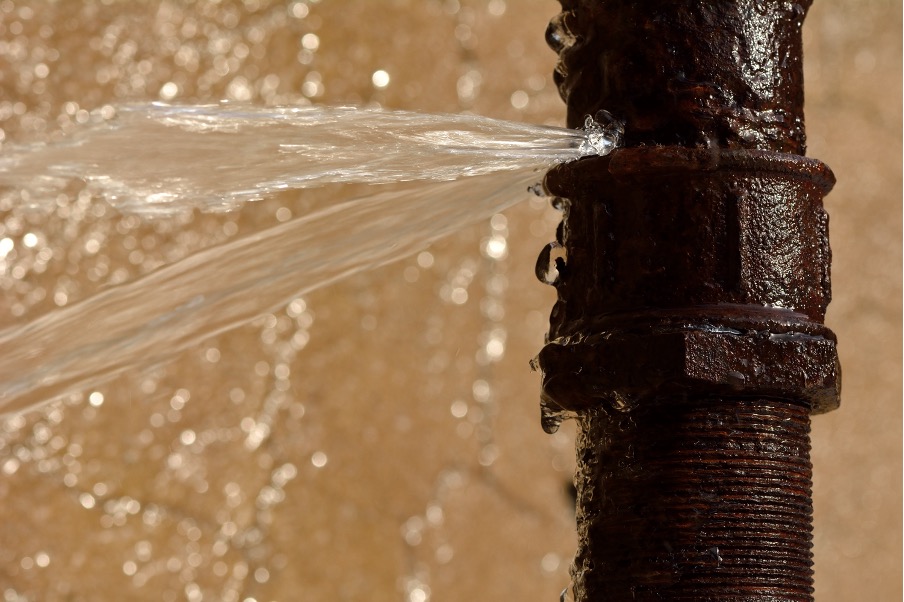Right here in the next paragraph you'll find more good details regarding Locating water leaks.

Early detection of dripping water lines can reduce a possible calamity. Some small water leakages might not be noticeable.
1. Take A Look At the Water Meter
Every house has a water meter. Inspecting it is a surefire manner in which helps you discover leaks. For beginners, turn off all the water resources. Guarantee no one will certainly purge, use the faucet, shower, run the washing maker or dishwashing machine. From there, go to the meter and watch if it will transform. Because no one is utilizing it, there must be no movements. That shows a fast-moving leak if it relocates. If you discover no modifications, wait a hr or 2 as well as check back once more. This means you may have a slow-moving leakage that can also be underground.
2. Examine Water Usage
If you detect sudden modifications, regardless of your consumption being the exact same, it means that you have leaks in your plumbing system. An unexpected spike in your bill suggests a fast-moving leakage.
A stable increase every month, also with the same practices, reveals you have a slow-moving leakage that's also gradually rising. Call a plumber to completely check your home, especially if you really feel a cozy location on your flooring with piping beneath.
3. Do a Food Coloring Test
30% comes from commodes when it comes to water usage. Test to see if they are running appropriately. Drop specks of food shade in the tank as well as wait 10 minutes. There's a leakage in between the tank as well as dish if the shade in some way infiltrates your dish during that time without flushing.
4. Asses Exterior Lines
Don't fail to remember to examine your exterior water lines too. Test faucets by affixing a yard hose. Ought to water leak out of the connection, you have a loosened rubber gasket. Replace this and ensure all connections are limited. If you've got a sprinkler system, it will aid get it skillfully examined and kept every year. One tiny leakage can throw away tons of water and surge your water costs.
5. Examine and also Analyze the Scenario
Home owners need to make it a habit to examine under the sink counters and even inside cabinets for any bad odor or mold and mildew development. These two warnings suggest a leak so punctual interest is required. Doing routine inspections, also bi-annually, can conserve you from a significant problem.
Inspect for stainings as well as weakening as most pipes and devices have a life span. If you suspect leaking water lines in your plumbing system, do not wait for it to escalate.
Early detection of dripping water lines can reduce a possible catastrophe. Some tiny water leakages might not be visible. Examining it is a proven method that assists you uncover leakages. One little leak can waste heaps of water and surge your water expense.
If you believe leaking water lines in your plumbing system, do not wait for it to rise.
WARNING SIGNS OF WATER LEAKAGE BEHIND THE WALL
PERSISTENT MUSTY ODORS
As water slowly drips from a leaky pipe inside the wall, flooring and sheetrock stay damp and develop an odor similar to wet cardboard. It generates a musty smell that can help you find hidden leaks.
MOLD IN UNUSUAL AREAS
Mold usually grows in wet areas like kitchens, baths and laundry rooms. If you spot the stuff on walls or baseboards in other rooms of the house, it’s a good indicator of undetected water leaks.
STAINS THAT GROW
When mold thrives around a leaky pipe, it sometimes takes hold on the inside surface of the affected wall. A growing stain on otherwise clean sheetrock is often your sign of a hidden plumbing problem.
PEELING OR BUBBLING WALLPAPER / PAINT
This clue is easy to miss in rooms that don’t get much use. When you see wallpaper separating along seams or paint bubbling or flaking off the wall, blame sheetrock that stays wet because of an undetected leak.
BUCKLED CEILINGS AND STAINED FLOORS
If ceilings or floors in bathrooms, kitchens or laundry areas develop structural problems, don’t rule out constant damp inside the walls. Wet sheetrock can affect adjacent framing, flooring and ceilings.
https://www.servicemasterbyzaba.com/blog/how-to-detect-water-leakage-in-walls/

Do you enjoy reading up on Top leak detection hacks? Write a comment down below. We will be interested to hear your responses about this blog. We hope to see you back again in the future. Enjoyed reading our blog? Please share it. Let others locate it. Kudos for your time. Visit us again soon.